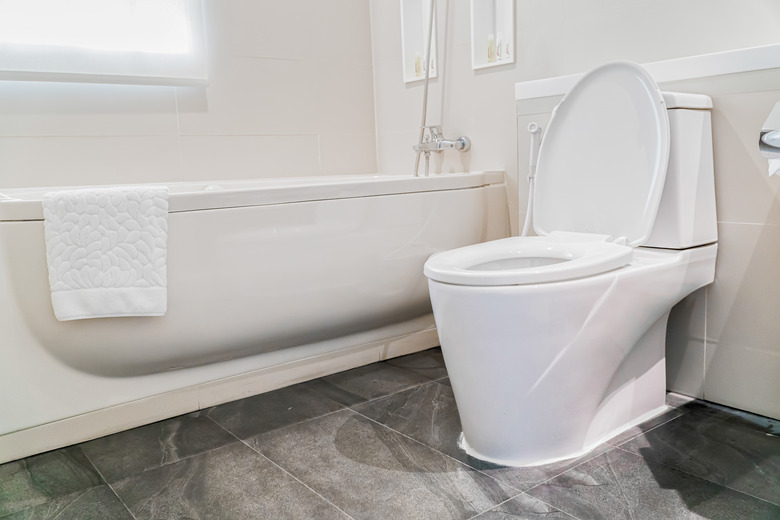Why Are Toilets Porcelain?
There are a few things every home must have, and a toilet is chief among them. In the last 150 years, indoor plumbing has transformed modern lives, improving hygiene and making the daily business of using the loo, or toilet, a much less unpleasant experience. Today, nearly all toilets are made of bone-white porcelain, not designer colors, but why exactly? Here's what you need to know.
A Brief History of Toilets
A Brief History of Toilets
Ancient Romans went to public baths not just for baths but for doing their business on stone benches, which were some of the earliest public toilets. Later, squat loos, or holes in the floor — often separated from the main living space in a room called a garderobe — became the option favored by society's wealthy, but this caused a stink. Remarkably, this smelly vulnerability could be exploited for sieges and castle invasions.
You may not know that the flushable toilet has existed since 1592, but it required 7.5 gallons of water to flush, compared to just 1.6 gallons today, and it was a certifiable cesspool despite the flushing. That's why flushable toilets didn't begin catching on until 1775 when Alexander Cummings invented the S-curve pipe, preventing sewage gases from rising up. It was a century later that Thomas Crapper's invention of the ballcock would revolutionize flushable toilets and is largely why "going to the crapper" has become an idiom today.
Tip
Found today in public parks off the beaten path, outhouses were standard for a long, long time — often shared by multiple households in cities.
Why Toilets Are Porcelain
Why Toilets Are Porcelain
Porcelain has been part of the toilet game for a couple of centuries despite many parts being made of wood or metal. Over time, porcelain became the king of the throne. Why? Because it's easy to clean, hygienic, affordable to make, and comfortable to use. Wood, no matter how well sealed, is porous and expands from water. Metal, while hygienic, affordable, and easy to shape, is always cold and unpleasant to sit on. Modern plastic is conceivable as a toilet material, but it's porous and tends to warp under the repeated weight strain that toilets are subjected to.
The smooth surface of porcelain, with modern glazing techniques, means it's strong and easily sanitized, which is critical to public health. Arguably the single biggest advancement in public healthcare of the last two centuries — other than the discovery of penicillin — was the evolution of the toilet and its omnipresence in homes.
Ceramics have been in use for nearly 30,000 years, with glazes in use for over 8,000 years. The porcelain used in toilets today is called vitreous china, which is the shiny glazing technique used to make toilets, sinks, and tubs so durable. That manufacturing process includes the clay being shaped in a mold before being fired in a kiln and then glazed and kiln-fired a second time.
Toilets kiln-fire to a natural off-white appearance, but there were eras in the last century during which fashionable colors were popular for décor reasons until the 1970s. Today, it's thought that nearly 95 percent of toilets are white for simple hygiene reasons since it leaves nowhere for filth to hide.
